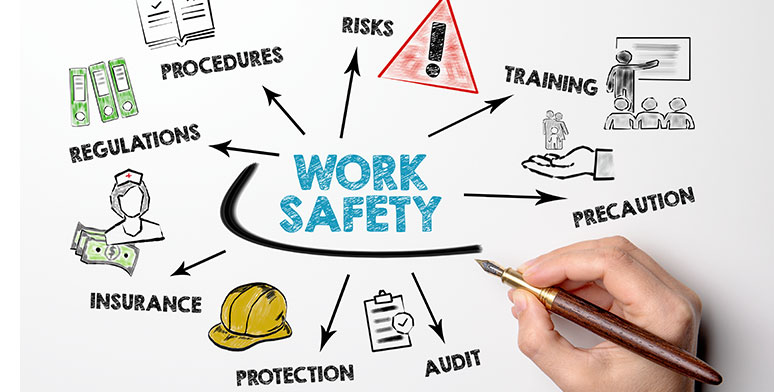Workplace Safety and Health: A Priority for Every Business

A proper workplace safety and health environment is essential for employee morale, productivity, and legal compliance. Let’s explore key aspects of workplace safety and health.
Creating a Safe Work Environment
A safe workplace starts with a strong safety culture. Here are some essential steps:
- Conduct a thorough risk assessment: Identify potential hazards and develop prevention measures.
- Provide safety training: Educate employees about safety procedures and emergency response.
- Implement safety protocols: Establish clear guidelines for workplace safety.
- Encourage a safety-first mindset: Foster a culture where safety is everyone’s responsibility.
- Regularly inspect the workplace: Identify and address safety hazards promptly.
A safe work environment is built on a foundation of proactive measures and a strong safety culture. By conducting thorough risk assessments, providing comprehensive safety training, implementing clear protocols, fostering a safety-first mindset, and conducting regular inspections, organizations can significantly reduce the risk of accidents and create a healthier, more productive workplace for employees.
Preventing Workplace Accidents
Accidents can have devastating consequences. Prevention is key:
- Use personal protective equipment (PPE): Provide and enforce the use of appropriate PPE.
- Maintain equipment: Regularly inspect and maintain tools and machinery.
- Ergonomic considerations: Design workstations to prevent musculoskeletal injuries.
- Address fatigue and stress: Implement measures to reduce employee fatigue and stress.
- Investigate accidents: Analyze incidents to identify root causes and prevent recurrence.
Preventing workplace accidents requires a multi-faceted approach. By prioritizing the use of personal protective equipment, maintaining equipment, designing ergonomic workstations, addressing employee fatigue and stress, and thoroughly investigating accidents, organizations can significantly reduce the risk of injuries and create a safer working environment for all employees.
Understanding Workers’ Compensation
Workers’ compensation is an insurance program that provides benefits to employees injured on the job.
- Know your state’s laws: Understand the specific requirements for your business.
- Provide necessary coverage: Ensure adequate workers’ compensation insurance.
- Report injuries promptly: Follow procedures for reporting workplace injuries.
- Communicate with employees: Explain the workers’ compensation process.
- Prevent claims: Implement safety measures to reduce the likelihood of injuries.
Understanding and complying with workers’ compensation laws is crucial for protecting both employees and employers. By staying informed about state regulations, providing adequate coverage, reporting injuries promptly, maintaining open communication with employees, and implementing preventative safety measures, businesses can mitigate risks, ensure compliance, and support injured employees in their recovery.
Remember, a safe and healthy workplace is not just a legal requirement, it’s a moral obligation. By prioritizing safety and health, you create a positive work environment and protect your business from liabilities.

Recent Comments